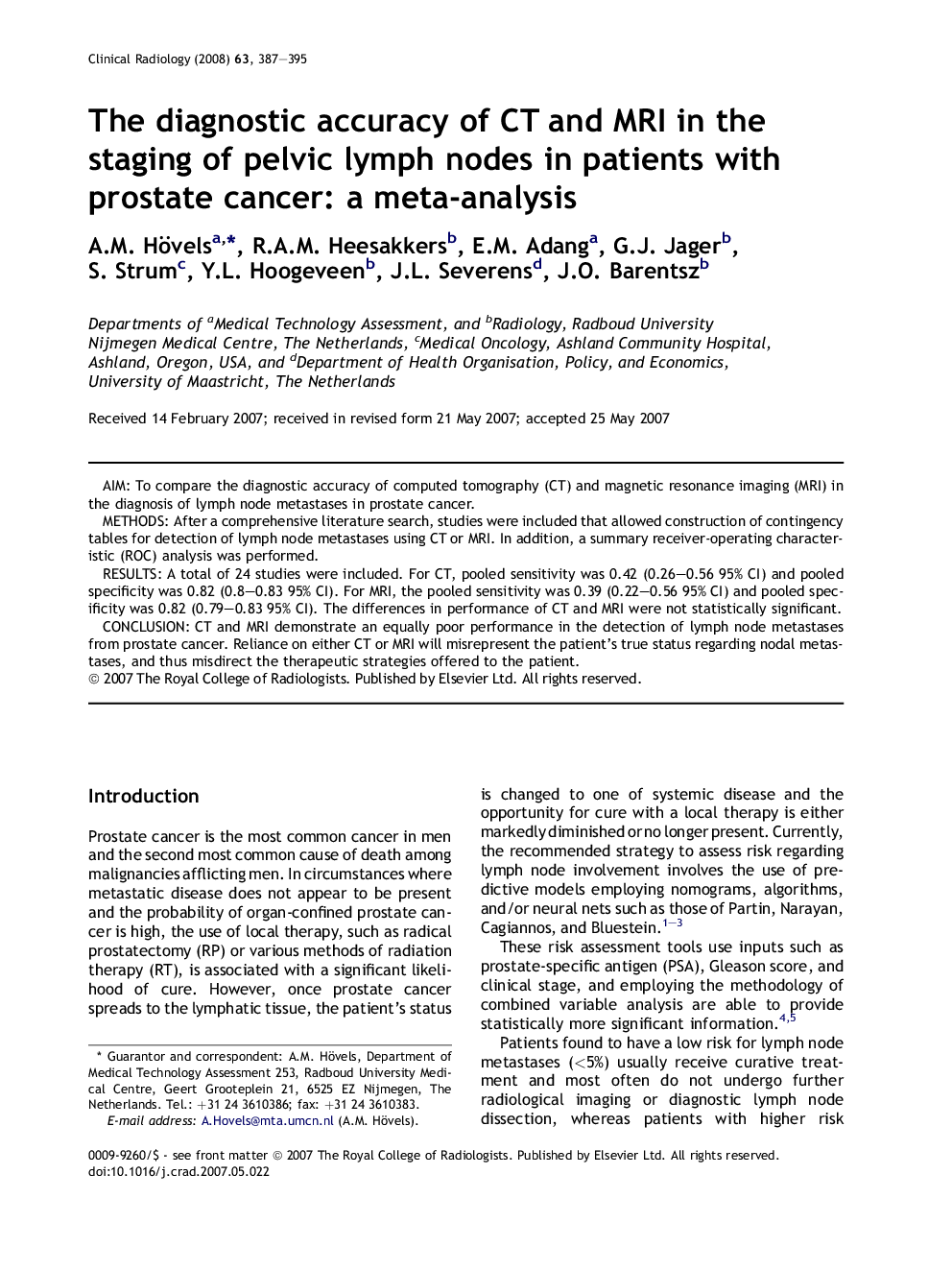| Article ID | Journal | Published Year | Pages | File Type |
|---|---|---|---|---|
| 3983095 | Clinical Radiology | 2008 | 9 Pages |
AimTo compare the diagnostic accuracy of computed tomography (CT) and magnetic resonance imaging (MRI) in the diagnosis of lymph node metastases in prostate cancer.MethodsAfter a comprehensive literature search, studies were included that allowed construction of contingency tables for detection of lymph node metastases using CT or MRI. In addition, a summary receiver-operating characteristic (ROC) analysis was performed.ResultsA total of 24 studies were included. For CT, pooled sensitivity was 0.42 (0.26–0.56 95% CI) and pooled specificity was 0.82 (0.8–0.83 95% CI). For MRI, the pooled sensitivity was 0.39 (0.22–0.56 95% CI) and pooled specificity was 0.82 (0.79–0.83 95% CI). The differences in performance of CT and MRI were not statistically significant.ConclusionCT and MRI demonstrate an equally poor performance in the detection of lymph node metastases from prostate cancer. Reliance on either CT or MRI will misrepresent the patient's true status regarding nodal metastases, and thus misdirect the therapeutic strategies offered to the patient.
